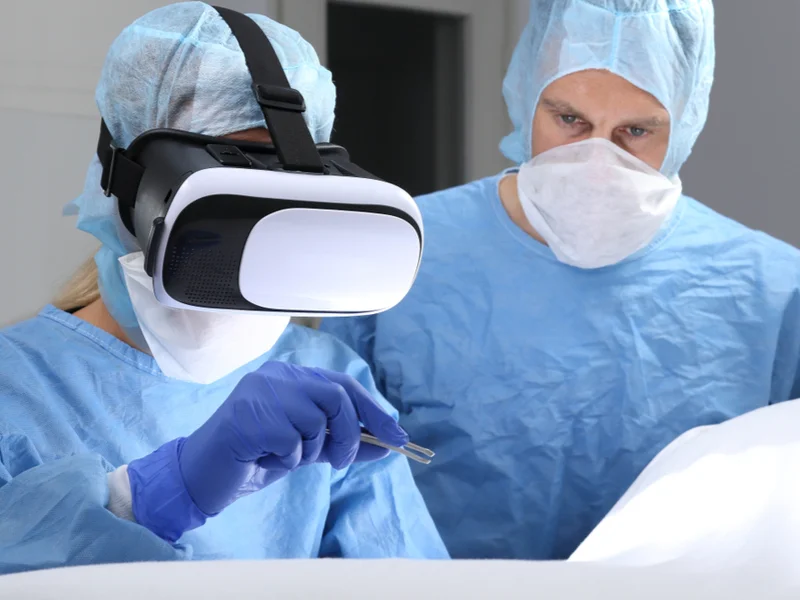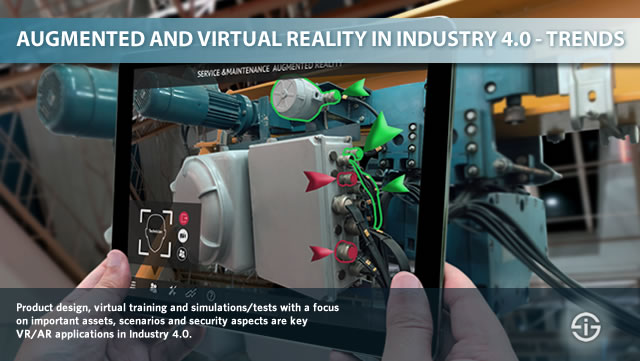Virtual Reality (VR) and Augmented Reality (AR) are two technologies that have gained immense popularity in recent years, particularly in the healthcare industry. Both VR and AR have the potential to revolutionize the way healthcare services are delivered, offering new and innovative solutions to improve the quality of care and patient experience.
Virtual Reality and Augmented Reality
Virtual Reality is a technology that creates an artificial environment where users can interact with the digital world. In the healthcare sector, VR has the potential to be used for a variety of purposes, such as patient therapy, training, and education.
For example, VR can be used to simulate different types of surgeries, helping medical professionals to practice and refine their skills before performing the actual procedure. Additionally, VR can be used as a form of therapy for patients suffering from chronic pain, anxiety, and phobias, by exposing them to a virtual environment that can help reduce their symptoms.
Augmented Reality, on the other hand, enhances the real world with digital information, allowing users to experience the physical world in a new and innovative way. In the healthcare industry, AR has the potential to revolutionize the way medical professionals diagnose, treat, and educate patients.
For example, AR can be used to provide doctors and nurses with real-time information and guidance during a medical procedure, helping to reduce the risk of error and improve the quality of care. Additionally, AR can be used to provide patients with detailed information about their conditions, helping them to understand their treatments and improve their outcomes.

In cardiac care, VR can be used for surgical simulations, which can help surgeons to practice complex procedures and improve their skills. Additionally, VR can also be used for patient education, allowing them to understand the procedure and the outcomes better. With VR technology, patients can have a virtual experience of the procedure, making them feel more relaxed and less anxious about the actual procedure.
AR can be used in cardiac care to provide real-time information during surgeries, which can help surgeons make more informed decisions. With AR, surgeons can access digital information such as medical images, videos and other relevant information right in the operating room, without having to leave the patient’s side.
Holograms are one of the latest advancements in AR technology, and they have the potential to revolutionize the way cardiac care is delivered. Holograms can be used to project 3D images of the heart and other internal organs, which can help physicians to diagnose heart diseases more accurately and effectively. Holograms can also be used to create interactive simulations of various procedures, allowing doctors to practice and refine their techniques.
One of the current technologies used in cardiac care is the Magic Leap One, which is a mixed reality headset that combines AR and VR technologies. This device can be used to create holograms of the heart, which can be used to diagnose and treat heart diseases. The Magic Leap One can also be used to provide real-time information during surgeries, allowing surgeons to make more informed decisions.
Another example of technology used in cardiac care is the Microsoft HoloLens, which is a wearable holographic computer. The HoloLens can be used to create interactive simulations of procedures, allowing physicians to practice and refine their techniques. Additionally, the HoloLens can also be used to provide real-time information during surgeries, making it easier for surgeons to make informed decisions.
The future of VR and AR in the healthcare industry is extremely promising, with many new and innovative applications being developed every day. For example, VR and AR technologies have the potential to help patients with chronic pain, anxiety, and phobias, by providing them with a virtual environment that can help reduce their symptoms. Additionally, VR and AR can be used to simulate different types of surgeries, allowing medical professionals to practice and refine their skills before performing the actual procedure.
Furthermore, VR and AR have the potential to improve the way medical professionals diagnose and treat patients, by providing real-time information and guidance during medical procedures. In the future, these technologies could also be used to improve patient education and engagement, by providing patients with detailed information about their conditions and treatments in a way that is easy to understand and interactive.
These technologies are providing new and innovative ways to diagnose, treat and educate patients, allowing healthcare professionals to provide the best possible care. With the continued development of VR and AR technologies, we can expect to see even more exciting advancements in the field of cardiac care in the near future.
The impact of AR and VR on Logistics and Operations efficiency:
The Covid-19 pandemic has brought significant disruptions to MRO (Maintenance, Repair, and Operations) logistics and operations in the aviation and aerospace industry. With travel restrictions, supply chain disruptions, and reduced workforce, Logistics companies have struggled to maintain their operations and provide timely maintenance services to their customers.
However, with the advancements in AR (Augmented Reality) and VR (Virtual Reality) technologies, Logistics companies have the opportunity to boost their logistics and operations efficiency and overcome the challenges posed by the pandemic. For example, one of the leading logistics provider in Swiss Kuehne+Nagel implemented robotic process automation using AR to make its logistic operation and business units automated.

One of the key applications of AR and VR in MRO operations is in remote maintenance and training. With AR and VR technologies, technicians can receive real-time guidance and instructions for maintenance tasks, reducing the need for on-site support. This not only saves time and resources but also increases safety, as technicians can perform complex tasks with greater accuracy.
In addition, AR and VR technologies can be used to create virtual simulations for maintenance training, allowing technicians to practice and perfect their skills without the need for physical equipment. This reduces the time and costs associated with traditional training methods and ensures that technicians are equipped with the necessary skills and knowledge to perform their tasks effectively.
Another area where AR and VR are having a significant impact in MRO operations is in the supply chain management. With AR technologies, MRO organizations can track and manage their inventory in real-time, reducing the risk of stock shortages and ensuring that parts are available when they are needed. In conclusion, AR and VR technologies have the potential to revolutionize MRO logistics and operations, providing new opportunities for MRO organizations to overcome the challenges posed by the Covid-19 pandemic and improve their efficiency and safety. Some examples of AR and VR technologies currently used in MRO operations include Daqri Smart Glasses, Microsoft HoloLens, and Virtalis Virtual Reality Systems.
